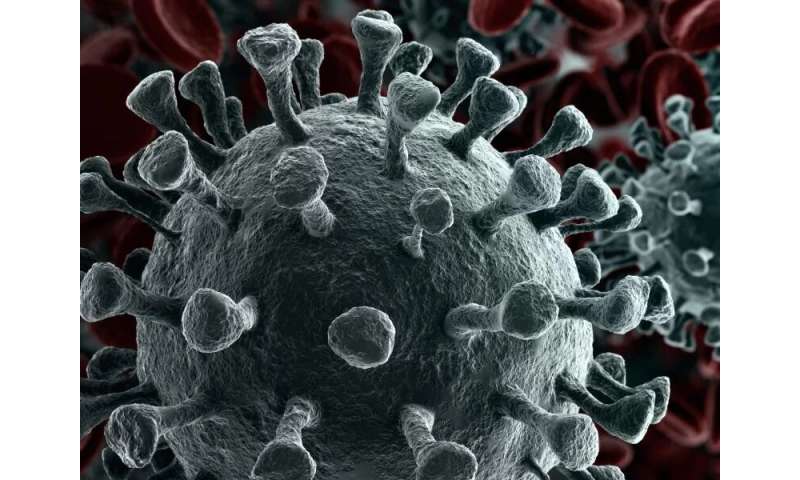Coronavirus’ weird trip inside cells might be its undoing, scientists say

(HealthDay)—The COVID-19 coronavirus uses an unusually complex method to replicate itself inside human cells, and experts say the somewhat clunky process could be exploited to stop the virus in its tracks.
All viruses hijack the biological processes of an infected cell to pull together the different proteins needed to make copies of themselves.
But the COVID-19 virus—SARS-CoV-2—makes a stop along the way that’s a head-scratcher for scientists.
It’s widely known now that the virus infects cells using a spiky receptor “that is widely distributed to multiple tissue types,” said Dr. Amesh Adalja, a senior scholar with the Johns Hopkins Center for Health Security in Baltimore. “This may explain its ability to impact multiple organ systems beyond the respiratory tract, to which other coronaviruses are largely restricted.”
After infection, the coronavirus—which is 1/100th the size of an average human cell—uses two-thirds of its genetic material inside the cell to replicate. The hijacked cell reads the virus’ genetic map and starts making the proteins needed to assemble new copies of SARS-CoV-2.
At this point, things get weird.
Instead of emerging straight from the cell’s membrane, new SARS-CoV-2 viruses stop at a pancake-like structure inside the cell called the Golgi complex.
The Golgi complex acts as a kind of post office for the cell, sorting and processing proteins and sending them along to their final destination after encasing them in a protective coating called a vesicle.
SARS-CoV-2 viruses slip through the Golgi membrane, fully assembling there and using a piece of the membrane to form its protective outer envelope. The Golgi complex then encases each virus in a vesicle and ships it to the cell surface.
Thus, SARS-CoV-2 emerges from the cell as a fully complete virus, unlike other types of virus that assemble themselves as they emerge by stealing a piece of the cell membrane on the way out, said researcher Carolyn Machamer, a professor of cell biology at Johns Hopkins University School of Medicine.
“We’re trying to understand the benefit for the virus, because it’s a very inefficient way of getting out of the cell,” she said. “Viruses are so streamlined, and they can mutate. If the process wasn’t advantageous, the virus would be doing it a different way.”
What makes this mystery harder to understand is that the Golgi complex is acidic, and potentially could damage the spiky proteins that the COVID-19 virus uses to infect healthy cells.
But the coronavirus appears to have figured out a way to neutralize the pH of the Golgi body so it can obtain its vesicle coating without damaging these spikes, the researchers said.
Ultimately, each infected cell can release millions of copies of a virus before the cell finally breaks down and dies.
These extra steps—the trip through the Golgi complex and then emergence from the cell—are promising targets for future drugs aimed at stopping the spread of COVID-19, Machamer said.
Current COVID-19 drugs like remdesivir work by blocking the replication process inside the cell, or help the body’s organs and systems by reducing inflammation.
“We don’t have anything for the later steps, where the virus assembles and then makes it way out of the cell,” Machamer said.
Adalja agreed.
“Treatments for SARS-CoV-2 attack various points of the cycle it takes in entering and traversing cells, as do treatments for all viruses,” he said.
These traits in SARS-CoV-2 replication have been seen in other viruses, but have come together in a unique way for the new coronavirus, researchers said.
Some viruses also use the Golgi complex in the assembly process, the most well-known being the German measles virus, rubella. Others like West Nile and hepatitis C emerge fully formed from the cell like SARS-CoV-2, but use a different method of assembly, Machamer said.
In this video, Johns Hopkins outlines the cellular processes involved:
Source: Read Full Article
